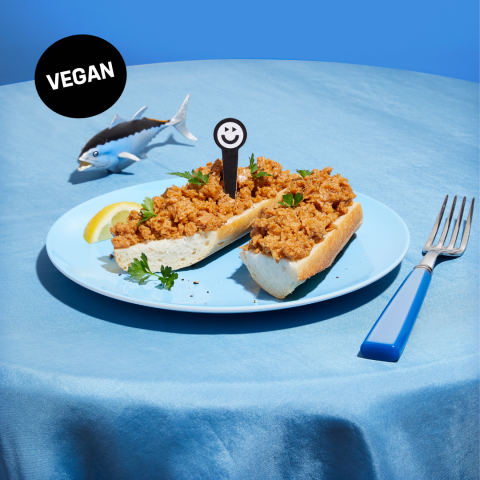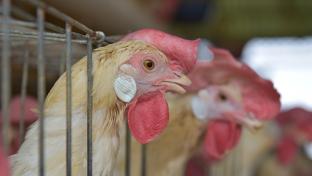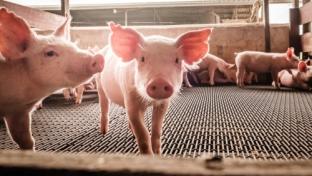Cultivated, Plant-Based Meats vs. Animal Proteins

Last month, Upside Foods and Good Meat received grants of inspection from the U.S. Department of Agriculture, enabling the companies to sell cultivated chicken products in the United States. This move has brought such proteins — described by The Good Food Institute (GFI) as “real meat made with a fraction of the resources required for conventionally produced meat” — even further into the spotlight, as well as more likely to be sold at grocery stores in the near future.
The USDA’s action “marks a pivotal moment in food and agriculture,” asserts Bruce Friedrich, president of Washington, D.C.-based GFI, a nonprofit think tank working to advance cultivated meat and alternative protein innovation worldwide. “Consumers are now one giant step closer to enjoying the meat they love without compromise. Global demand for meat is projected to double by 2050. Breakthroughs like cultivated meat enable the world to diversify protein production while slashing emissions, increasing food security, reducing risks to public health, and freeing up lands and waters for restoration and recovery. Given the stakes, a transition toward cultivated meat and other alternative proteins is as essential as the global transition to renewable energy. And just like renewable energy, massive public investment is key to ensuring these new sustainable foods can scale, create future-focused jobs and benefit everyone.”
Marketing Cultivated Meat
Berkeley, Calif.-based Upside Foods, which grows meat, poultry and seafood directly from animal cells, has also launched a contest that consumers can enter via social media for a chance to be among the first in the United States to eat its cultivated chicken. Both Upside and Alameda, Calif.-based Good Meat, which first launched its product in Singapore in 2020, have disclosed plans to offer their cultivated chicken initially at select restaurants in the United States.
“Consumer reaction to these cultivated meat products will likely be a mix of curiosity, excitement and perhaps initial hesitation,” notes Justin Dranschak, a cell line development expert and the director of biopharma at San Jose, Calif.-based Molecular Devices, which develops the synthetic biology technology to create lab-grown meat. “The concept of lab-grown meat is still new and may require a period of adjustment for many consumers. However, the underlying trends towards healthier, more sustainable and ethically sourced food products are strong indicators that many consumers will be open to trying these products.”

When asked how suppliers and retailers can best encourage consumers to try cultivated meat, Dranschak suggests the following:
“Transparency is critical in addressing potential concerns and encouraging trial. Suppliers and retailers can provide detailed yet accessible information about how the meat is grown, the rigorous safety measures in place, and the benefits in terms of sustainability and animal welfare. Clear labeling, interactive displays, informative websites and open dialogues on social media platforms can all be tools for education and engagement.
“Tasting sessions or promotional events are another great strategy to encourage trial. If consumers can taste the product and find that it matches or surpasses the quality of traditional meat, this could greatly influence their perception and willingness to purchase.
“Additionally, consumers’ questions often revolve around taste, texture, safety and nutritional content. Suppliers and retailers should be prepared to answer these questions confidently. They can share that the taste and texture of cultivated meat is designed to closely mimic that of conventional meat. As for safety and nutrition, they can explain that these products go through rigorous testing and regulatory oversight to ensure they meet or exceed the standards set for traditional meat.
“Storytelling also plays a crucial role. Highlighting the stories of the scientists, farmers and innovators behind these products can help build a stronger emotional connection with consumers. By emphasizing the care, dedication and innovation that goes into each product, suppliers and retailers can frame cultivated meat as not just an alternative, but as a thoughtful choice for consumers who care about health, animals and the planet.”
“The key here is education,” advises Ali Khademhosseini, founder and CEO of Omeat, a Los Angeles-based cultivated ground beef startup that also plans to debut in U.S. restaurants once it receives government approval. “The best and only way to encourage repeat purchases in-store is through education. Retailers should message the benefits of cultivated meat as it pertains to nutritional benefits and increased food safety, and how its process is better for the future of our planet compared to conventional options.”
Backed by $40 million in funding, Omeat recently emerged from stealth mode with a patent-pending technological process that it describes as far more sustainable and humane than conventional methods of meat production. The company is also building a pilot plant slated to go live later this year.

Plant-Based Innovation Continues
Beyond the recent flurry of interest in cultivated meat, plant-based protein innovation continues apace.
“At Future Farm, we use a tri-protein blend and true texture technology to ensure our consumers are getting the most texturally accurate representation of traditional protein,” explains Alexandre Ruberti, CEO of the Rio de Janeiro-based company, whose U.S. headquarters is in Santa Monica, Calif. “We mimic the juiciness and taste to deliver quality, non-GMO, clean ingredients and gluten-free products. Technology is constantly evolving, and so we are constantly adapting to meet consumer demand. R&D processes need to be rigorous, and products need to be tested thoroughly to ensure we offer the best-tasting products on the market.”
Future Farm’s latest products include Oat Milk, Chicken, Tuna and Honey, which are set to launch within the next year, along with a new and improved 4.0 version of the Future Burger. All were developed in response to consumer demand. According to Ruberti, “We’ve evolved into becoming a one-stop shop and the farm of the future where consumers can find everything they need on a regular farm, but plant-based.”
[Read more: "Plant-Based Eating for Health"]
When it comes to promoting Future Farm items in stores, Ruberti says: “We believe that success here lies in always working together with retailers to market effectively. Retail partners need the commercial and marketing team from the brand side to understand our product and offer the best brand experience in-store. Our focus always lies within making the customer and consumer have a sense of belonging to the brand, creating a real connection.” The three words he emphasizes in this effort are “stimulating,” to convey innovation and fun, including flavor; “inspiring,” to bond with consumers over values like protecting the environment; and “engaging,” to create an inclusive community.
“Plant-based protein alternatives have infiltrated most conventional grocery stores — just like natural retailers — in the frozen foods department,” observes Danny O’Malley, founder and president of San Diego-based Before the Butcher. “There was a big push from manufacturers and retailers in the past year to offer alternatives in most frozen categories, including pizzas, bowls, meals, burritos and most other ‘further processed’ foods in the frozen foods section of most retailers.”
Agreeing with Ruberti that development of such products is driven by consumer demand, O’Malley believes in “placing these plant-based products directly next to their ‘like’ animal-based protein. Incentives like on-the-shelf discounts, coupons or BOGOs help to drive trial, along with product demos. Repeat purchase is most often driven by taste and affordability.”

Alternative Futures
Asked what he expects to occur in the alternative protein space in the near term, O’Malley replies, “I think we will start to see more ‘whole muscle’ plant-based meat products by the end of 2023, [such as] chicken filets, steaks, maybe even pork loins.”
“There’s so much more in store for the market as a whole,” predicts Ruberti, taking a wider view. “Plant-based is continuously growing, and Gen Z consumers are more mindful of their bodies and the environment than ever before.”
“A key hurdle is regulatory approval,” notes Omeat’s Khademhosseini, speaking of cultivated meat offerings. “FDA and USDA review and approval is on a company-by-company basis. Once approval is granted, companies will scale up production and get product on shelves.”
“In the next few years, we expect to see an even wider range of cultivated meat products, from different types of meat to seafood and perhaps even unique combinations of proteins,” says Dranschak, of Molecular Devices. “I do believe they will achieve mainstream acceptance. Why? Because they offer a viable solution to the ethical, environmental and public-health issues associated with traditional meat production. As awareness and understanding grow, so will acceptance.”





5c84.jpg)

